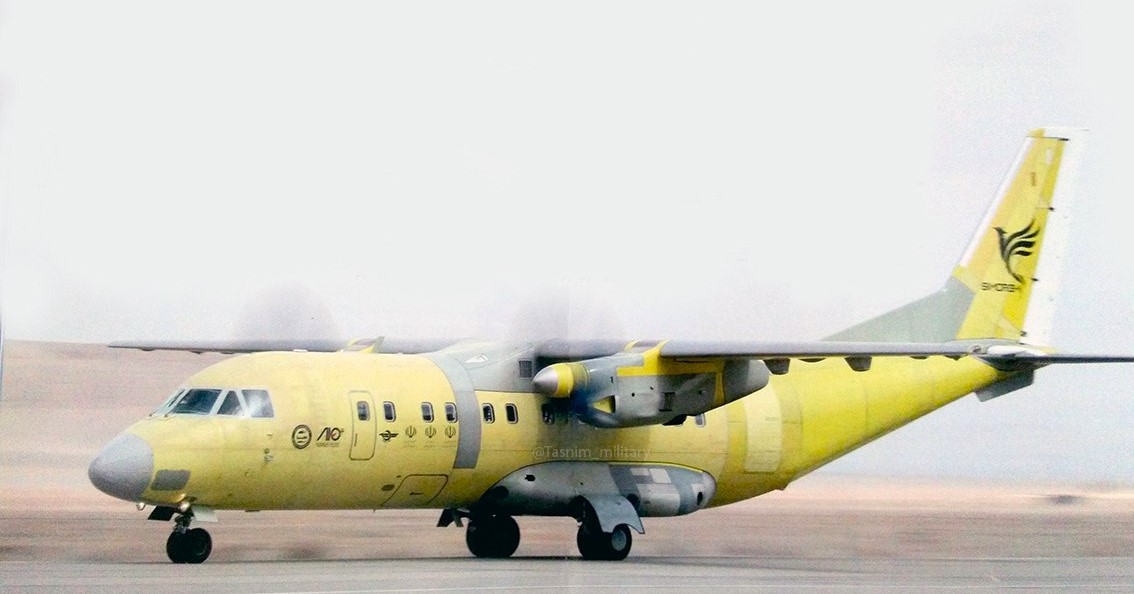


Head of Iran’s Civil Aviation Authority (CAA) says the domestically-designed Simorgh aircraft is undergoing various tests to receive a type certificate.
Mohammad Mohammadi Bakhsh said on Sunday that a prototype version of Simorgh had successfully undergone flight tests, adding that various other tests have been carried out on the aircraft in recent months to prove its airworthiness
Mohammadi Bakhsh said the CAA has been closely monitoring the tests and has received graphs and documents containing precise information about Simorgh’s performance.
Simorgh was unveiled in May 2022 as the first Iranian light transport aircraft. The plane is a modified version of IrAn-140, an Iranian-Ukrainian joint project which is based Antonov An-140.
The Simorgh aircraft is designed to transport a variety of cargo, including light-wheeled vehicles. According to Eghtesad News, it is also capable of transporting injured personnel, as its interior space can accommodate 24 stretchers for this purpose.
The new plane carried out a first successful flight in May 2023, nearly a year after it did a fast-taxi test.
Iranian defense ministry, which is in charge of manufacturing Simorgh, said just after the test flight that it had started the process to receive a test certificate for the plane.
Mohammadi Bakhsh said Simorgh is quite different from IrAn-140 because its engine and fuselage have been modified.
He said that a second Simorgh aircraft is being built and technicians are attaching wings, landing gears and engines to the plane.
The official said Iran is now in control of a home-grown plane-manufacturing industry which can join partnerships with international plane-makers.
He said that Simorgh is essentially a cargo plane but can join Iran’s fleet of short-haul regional jets in the future.
Reports in recent years have pointed to a major progress in Iran’s aircraft production and maintenance sector.
That has come against the backdrop of sanctions imposed on the country by the United States as Iranian airlines have been barred from purchasing new planes.
In the 1990s, Iran began a collaborative initiative with the Ukrainian company Antonov to manufacture passenger aircraft within the country’s borders.
In order to complete this project, the production line of the Antonov An-140 was moved to Iran and installed at HESA. The result was the IRAN-140, which is the name of the aircraft.
The company manufactured many units of IRAN-140. However, the production line was halted due to technical considerations. In 2014, following the Tehran-Tabas flight accident, the Civil Aviation Organization banned the flight of this aircraft, and the engineers from Antonov who were in Iran left the country.
Nevertheless, the aircraft’s production line remained in the country. The IRAN-140 aircraft was redesigned by HESA to accommodate the operational requirements of the armed forces and broaden its range of applications.
The aircraft’s design had to be altered to facilitate its use for other purposes, such as cargo transport, as a result of this redesign. In the aviation sector, even the slightest modifications to aircraft necessitate extensive technical expertise and numerous rigorous tests.
The Simorgh aircraft, equipped with two Klimov TV3-117 turboprop engines, has the capacity to travel a distance of 3,900 kilometers and achieve a maximum speed of 530 kilometers per hour.
A runway that is at least 1,450 meters long is necessary for takeoff, while a runway that is approximately 1,000 meters long is necessary for landing.
As per Iranian media, it's an appropriate choice for both military and commercial transport fleets, as it can transport up to 6 tons of cargo. The aircraft measures 23 meters in length, 25 meters in width, and 8 meters in height.
